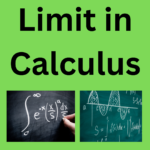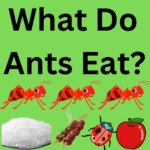Till 1803, there was no concept of reversible reactions. Its reason was that scientists believed that all the reactions are irreversible reactions. In 1803, the French chemist Claude Louis Bartholet gave the concept of reversible reactions. Before his observation, it was known that when sodium carbonate and calcium chloride react, they form sodium chloride and calcium carbonate. After that, he observed that sodium carbonate is present at the edges of the salt lakes. When he explored this fact that he knew that a large amount of the salt in the lakes reacts with calcium carbonate. As a result, sodium carbonate is formed. This observation provided an idea to him that the reverse of this reaction is also possible.
As we know that to represent chemical reactions, we have to use chemical equations. To separate the reactants and products in the chemical equations, we use arrows. To represent the irreversible reactions, we use a unidirectional arrow. On the other hand, to represent the reversible reactions, we use an equilibrium arrow. This equilibrium arrow shows that reversible reactions never complete. It means that reactants convert into products and products convert into reactants. On the other hand, unidirectional arrows of the irreversible reactions show that reactants convert into products and these products never react to produce the reactants.
What are Reversible Reactions?
The reactions that take place both in the forward as well as in backward directions reversible reactions. It means that reactants react to form products and products react to form reactants. That’s why to represent the reversible reactions, we use the equilibrium arrow. A general example of the reversible reactions is given below;
A + B ⇌ C + D
It means that ‘A’ and ‘B’ react to form ‘C’ and ‘D’ and ‘C’ and ‘D’ also react to form ‘A’ and ‘B’.
What are Irreversible Reactions?
The reactions which take place only in the forward direction are irreversible reactions. In an irreversible reaction, products never react to form reactants. That’s why to represent the irreversible reactions, we use the unidirectional arrow. A general example of the irreversible reactions is given below;
A + B → C + D
It means that ‘A’ and ‘B’ react to form ‘C’ and ‘D’ but ‘C’ and ‘D’ never react to form ‘A’ and ‘B’.
Chemistry lovers will also like to read about the balancing of chemical equations.
Why do Reversible Reactions Never Complete?
In Chemistry, most of the reactions are irreversible reactions. The simplest example of an irreversible reaction is the consumption reaction. It means that a piece of wood burns to form ash but ash never forms the new wood simultaneously. To convert the reactants into products, we require energy. In the case of irreversible reactions, we use this energy during the conversion of reactants into products. As a result, there remains no energy for the reverse reaction. On the other hand, in the case of reversible reactions, the reacting molecules use the energy within the system to break the chemical bonds to form the products. In the system, enough energy is present for the converse reaction. That’s why products can also react to form reactants. That’s why a reversible reaction never completes.





